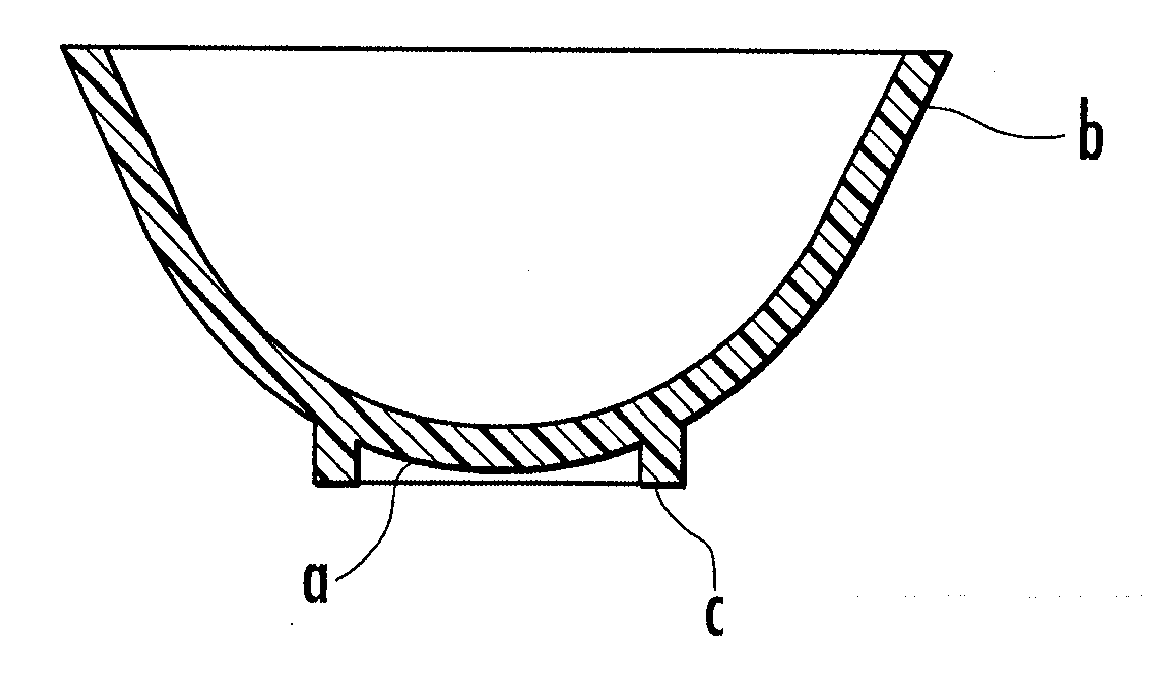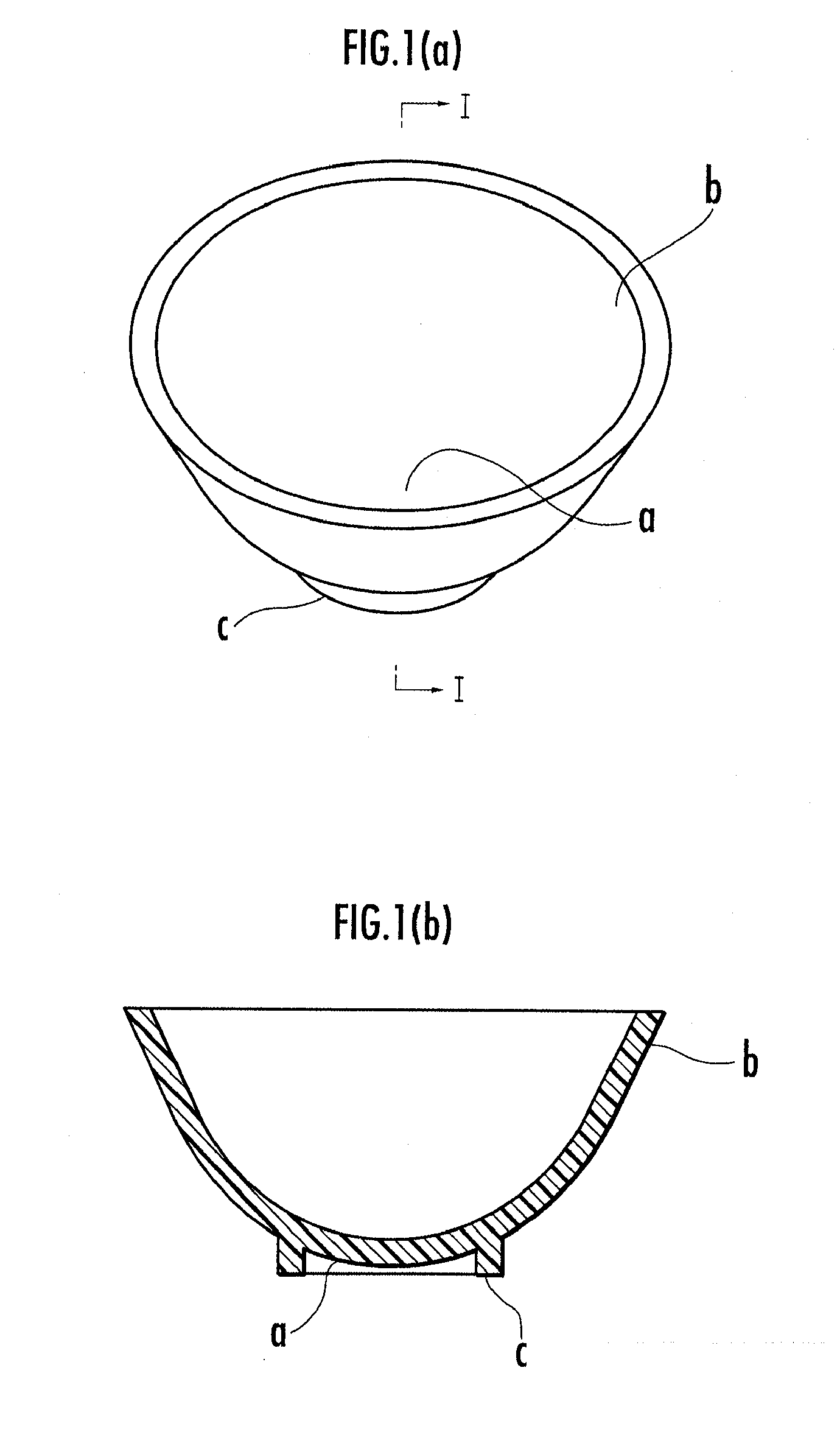Process for Production of Heat-Resistant Hollow Article Made of Polylactic Acid Containing Resin
a technology of polylactic acid and hollow article, which is applied in the direction of manufacturing tools, applications, food shaping, etc., can solve the problems of low heat resistance of polylactic acid, food containers that cannot withstand hot water, and the shape of injection-molded articles may be deteriorated, etc., to achieve excellent heat resistance, high accuracy, and favorable use
- Summary
- Abstract
- Description
- Claims
- Application Information
AI Technical Summary
Benefits of technology
Problems solved by technology
Method used
Image
Examples
Embodiment Construction
[0043]Hereinafter, an embodiment of the present invention will be described in details with reference to the drawings.
[0044]In this embodiment, a description will be given when a bowl A as shown in FIGS. 1(a) and 1(b) is manufactured as a heat-resistant hollow article by the injection molding of a polylactic acid containing resin.
[0045]FIG. 1(a) is a perspective view of the bowl A and FIG. 1(b) is a sectional view taken along the line I-I of FIG. 1(a). As shown in FIGS. 1(a) and 1(b), the bowl A has a bottom portion a and a peripheral wall portion b that is continuous with the bottom portion a and rises from the bottom portion a. The bowl A is provided, in the bottom portion a thereof, with an annular stand portion c that protrudes outward.
[0046]The bowl A is manufactured by using a mold 1 shown in FIG. 2. As shown in FIG. 2, the mold 1 used in the production process of this embodiment comprises a female mold portion 3 having a concavity 2 of a shape fitting the outer surface of the...
PUM
| Property | Measurement | Unit |
|---|---|---|
| temperature | aaaaa | aaaaa |
| thickness | aaaaa | aaaaa |
| thickness | aaaaa | aaaaa |
Abstract
Description
Claims
Application Information
 Login to View More
Login to View More - R&D
- Intellectual Property
- Life Sciences
- Materials
- Tech Scout
- Unparalleled Data Quality
- Higher Quality Content
- 60% Fewer Hallucinations
Browse by: Latest US Patents, China's latest patents, Technical Efficacy Thesaurus, Application Domain, Technology Topic, Popular Technical Reports.
© 2025 PatSnap. All rights reserved.Legal|Privacy policy|Modern Slavery Act Transparency Statement|Sitemap|About US| Contact US: help@patsnap.com



